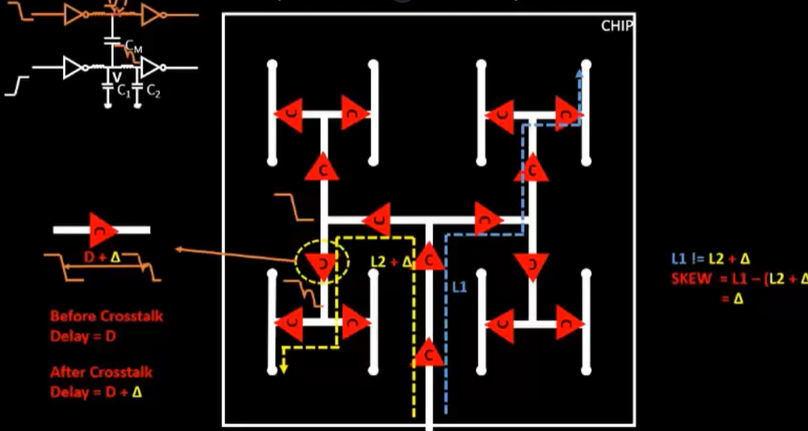Clock Net Shielding

Clock nets are among the most critical signals in a digital design. The clock tree is carefully constructed to minimize skew, often aiming for zero skew across all endpoints. However, this delicate balance can be disrupted by a phenomenon known as crosstalk.
Crosstalk
Crosstalk occurs when a signal on one wire (the aggressor) unintentionally interferes with a neighboring wire (the victim) due to capacitive coupling. In high-speed circuits, this interference can cause:
- Signal distortion
- Noise and glitches
- Timing violations (e.g., hold or setup failures)
- Overall deterioration of the clock tree’s integrity
Shielding Clock Nets
To mitigate crosstalk, clock nets are shielded — meaning they are surrounded by non-switching metal lines (usually tied to or ).
Shielding helps to:
- Reduce coupling capacitance between adjacent wires
- Protect victim nets from noise caused by nearby switching activity
- Maintain clean clock edges and predictable timing
Effects of Unshielded Aggressors
If a switching aggressor net is routed near an unshielded victim net, the strong capacitive coupling can cause two major problems:
- Glitch: A sudden voltage drop or spike on the victim line due to energy transfer from the aggressor. This can lead to incorrect data being latched into memory or flip-flops, resulting in functional errors.
- Delta Delay: A change in the timing of signal propagation due to induced noise — this can shift arrival times and potentially violate setup or hold constraints.
How Shielding Helps
Shielding works by placing or wires adjacent to critical nets (like clocks). These non-switching shields act as buffers, absorbing or blocking unwanted coupling from aggressor lines.
- Since the shields do not toggle, they do not transfer switching noise.
- This ensures that the victim net remains stable, preserving signal integrity and timing accuracy.